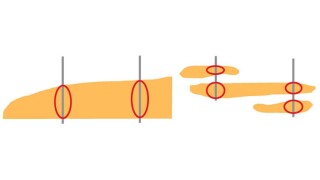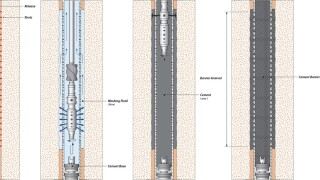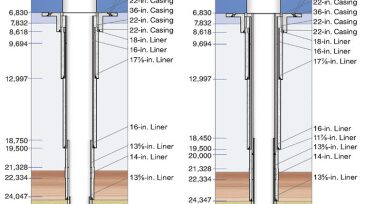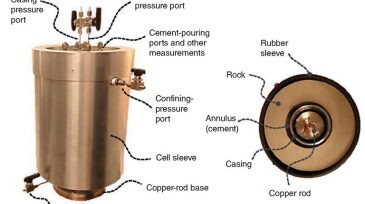Casing/cementing/zonal isolation
This paper expands the understanding of geopolymer/microsphere interactions and presents design considerations for alternative cementing materials under low-temperature regimes.
This paper describes an alternative lower-completion concept for developing Lower Wilcox reservoirs referred to as high-angle multifractured well design.
This paper presents a comprehensive literature review of perforate, wash, and cement techniques that compares new methods with traditional ones and uses field cases and computational fluid dynamics to find the most cost- and time-effective practices without sacrificing safety.
-
A field well was designed, built, and used to demonstrate the concept of real-time monitoring of the flow of drilling mud and smart cement and the hardening of the cement in place.
-
This paper discusses an expandable-liner-hanger (ELH) system that provides liner rotation during the liner deployment and the cementing operation while providing a hydraulically energized liner-top seal upon setting.
-
Despite cement’s remarkable properties, the search continues for enhancements in the areas of cost and isolation performance. Efficiencies and enhancements have been explored even to the point of replacing cement with other materials.
-
This paper focuses on cementing-design challenges and discusses the engineering techniques used to approach them.
-
In the Eagle Ford, an integrated approach to engineering and operations was key to optimize performance and improve understanding of the area.
-
Precise casing-wear prediction is important for improving well integrity and longevity, while simultaneously making casing designs more cost-effective. There are no industry guidelines for casing-wear prediction. This article presents a validated predictive model.
-
Cementing is central to the discussion of zonal isolation and well integrity.
-
This work demonstrates cement design that includes evaluating cement-sheath mechanical integrity in intercalated salts.
-
Operators in the North Sea have been concerned about the ability of the cement sheath to maintain sealing integrity because of the increasing number of reported failures in mature wells. This paper presents results from a new laboratory setup to visualize the source of issues.
-
Many wells in the Cana-Woodford shale suffer from chronic sustained casing pressure (SCP) because of poor cement-sheath bonding.











